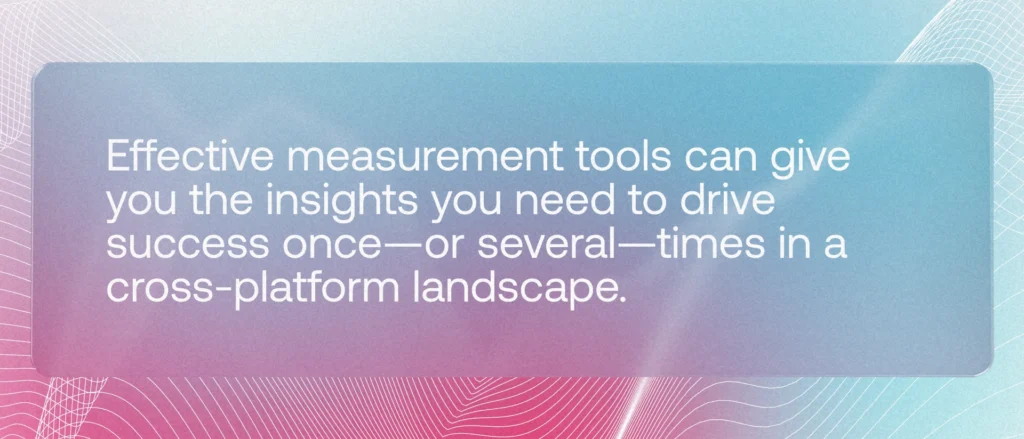How to Create a Media Plan for Video Advertising That Works

If you’re responsible for creating ads for your business or for a client, you’re probably familiar with the challenge of making those ads work. Without enough audience or platform information to guide the creative process, your ads might visually pop—then flop in engagement. On the other hand, an ad that’s been over-optimized, stuffed with keywords or full of jargon may have all the pieces of an engaging ad but bore viewers into switching the channel. Combine these challenges with the ever-changing, cross-platform landscape of video advertising today, and it’s a miracle ads drive results in the first place.
Let’s be honest, though. Video advertising shouldn’t feel like a shot in the dark or a rigid box-checking process. To maximize engagement and boost ROI, your ads should creatively engage the right viewers at the right time. That’s why you need a media plan—and we’ll walk you through how to make one.
In this article, we’ll cover:
- How to create a media plan
- How to turn goals into KPIs
- What addressable advertising can help you achieve
- Why cross-platform strategies are a must
- How to allocate budget efficiently
- Tools for monitoring and optimizing performance
- 2025 video advertising trends to plan for
How do I create a video advertising media plan?
First, it’s important to understand how a video advertising media plan is unique from other marketing channels. Standard media plans may encompass channels like paid search, organic social, out-of-home (OOH) and even print. If you’re launching a full-scale campaign, making a plan for these channels is crucial.
For video advertisers, though, zooming out too far can result in an unoptimized plan that’s not relevant to your viewers. Tighten your focus to consider more specific pieces that matter to your strategy, including:
- First- and third-party data for viewer segmentation
- Sequential messaging tactics
- Linear TV, connected TV (CTV), over-the-top (OTT) and social channels
- Real-time performance data for agile optimizations
With these components in mind, let’s learn how to create a media plan for video advertising.
Step #1: Define your goals
If you’re thinking, “My goals are engagement and ROI, obviously,” that’s fair, but getting more specific can help you achieve those goals more quickly. Common measurement metrics include engagement, but awareness and conversion are also up for grabs. Once you’ve defined your campaign’s primary goal, you can translate it into a key performance indicator (KPI), which will help you demonstrate that your ads are working.
Wondering how goals translate to KPIs? Take a look:
- Measure awareness through total reach
- Quantify engagement through clicks and completed views
- Track conversion through clickthrough rates (CTRs)
Tip: Need help tracking your KPIs? VideoAmp offers all your ads’ cross-platform performances in a visual dashboard.
Step #2: Identify (and reach) your target audience
We can’t discuss how to create a media plan without pointing out the potential of addressable advertising. If your business has an existing viewer profile based on linear TV viewership habits, it may be time for a refresh. CTV is the future of video advertising, and addressability can help you pinpoint hyper-specific segments—and design ads custom-built to convert. Addressable advertising can help you determine:
- Standard demographics
- Program interests
- Device usage breakdowns
- Preferred platforms
Keep in mind: you’ll need clean data that’s privacy-compliant to achieve a truly complete view of your target audience. If you’re struggling to access third-party data from streaming platforms, take a look at VALID™, which seamlessly combines first- and third-party data.

Step #3: Adopt a cross-platform state of mind
With your goals and viewership data squared away, it’s time to talk platforms. The days of a purely linear approach have passed, but there’s still an opportunity to engage in the most popular video advertising landscape.
Not sure how to create a media plan with cross-platform complexity in mind? Let’s make this simple.
Linear TV
Use this platform for prescriptive 15- to 60-second ads that drive awareness and impressions. You can measure outcomes from these ads to begin a sequential messaging chain.
CTV
Focus on high-quality, unskippable ads optimized for viewers watching on a TV screen or smart device. Reinforce messaging from your linear TV ads to spark curiosity and engagement.
OTT
Get granular with dynamic ads personalized to specific viewership habits. With the right approach, you can guarantee audience delivery during moments of high intention.
Social
Send it home with strategic placements that recall behaviors from past viewership data. These native video ads can reinforce intention from any other channel—and help you maximize engagement and ROI.
Try it out: still not sure how to create a media plan with so many channels to consider? VideoAmp has your back with an industry-leading commingled dataset that’ll help you feel confident in your media spend.
Step #4: Put your budget to work—the smart way
Maximizing your ROI means you’ll need to think about budget allocation before you ever place a bid. Demonstrating how your ad dollars perform is crucial, especially for agencies, so take some time now to familiarize yourself with the ad costs you may encounter, including:
- Production costs. Weigh the pros and cons of live-action versus animated ads.
- Bidding structures. Understand how ad bids differ between platforms—and be prepared to adjust bidding strategies in real time.
- A/B testing. Consider how running different creative, messaging or placements can help you optimize faster.
Feel like you understand how to create a media plan for video advertising? Let’s talk about some up-and-coming trends that may help you make even more informed decisions in the year ahead.
Step #5: Stay in touch with industry trends
You’re probably already pulse-checking your inbox every hour for the latest news on privacy regulations. If you are, you’re halfway there to a timely media plan that outpaces competitors. Consider how these trends can help you form a modern media plan.
- Cord-cutting is the new norm. Viewers increasingly prefer CTV and OTT over linear TV. Consider reallocating ad budget to these higher-intent channels.
- The AI in the room. Bottom lines love AI-powered efficiency, and the right programs can help you tailor ads to maximize cross-platform engagement.
- Privacy, please. Global privacy regulations are changing in real time, so your media plan should be just as agile—and safe. Focus on bolstering your first-party dataset or finding a future-focused solution for clean room data.
Step #6: Set up tools and repeat
In the end, an effective video advertising media plan should have a repeatable framework you can use over and over again. Effective measurement tools can give you the insights you need to drive success once—or several—times in a cross-platform landscape.

Ready to create your media plan? Start with intelligent data insights from a partner you can trust. VideoAmp empowers brands and agencies alike to build cross-platform media plans and make informed decisions that translate to ROI. Start planning today—and start delivering real impact for your business.
